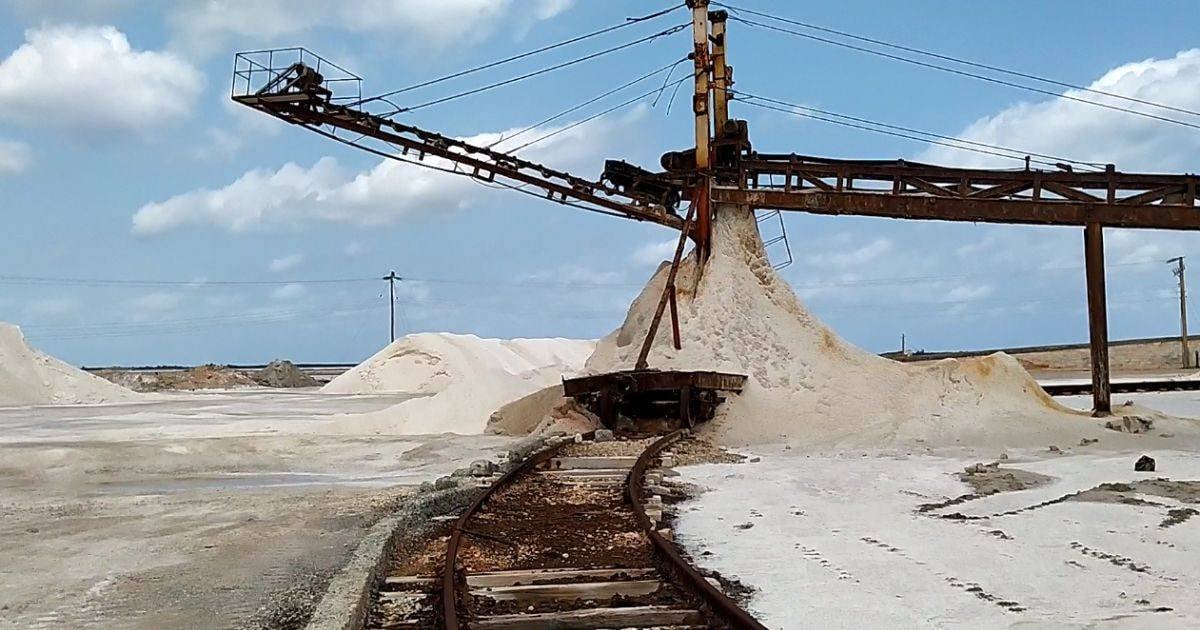The Cuban regime has attributed the ongoing salt shortage on the island to the nation's transportation crisis. Fabio José Raimundo Paz, the director general of the Geominero Salinero Business Group (Geominsal), stated on the official program Mesa Redonda that logistical difficulties and resource limitations are the primary reasons behind the persistent salt shortage in Cuba.
Raimundo Paz pointed out that, despite having "tens of thousands of tons of salt ready for distribution," the lack of transportation has prevented this essential product from reaching the population. "The case of salt is often complicated by the challenges of getting the product to the people," he said. "We have had tens of thousands of tons undelivered due to logistical complexities and resource limitations," emphasized Raimundo Paz.
This issue adds to the myriad of challenges the country faces regarding infrastructure and the distribution of essential goods, the official justified. Salt production in Cuba requires a significant amount of energy, primarily obtained through solar radiation. The country’s salinas are mainly located in the eastern region, taking advantage of favorable climatic conditions, with little rain and stable temperatures throughout the year, which accelerate water evaporation.
However, adverse weather conditions have severely impacted salt production in some regions, such as Matanzas. "In Matanzas, we have one of these production centers, but in the past 30 years, cyclones have destroyed it five times. This is an example of why we need to have these sites in more secure and efficient locations from a climatic standpoint," he explained.
Since last year, the regime has been blaming transportation issues for the lack of salt available for cooking. In February 2023, the Cuban Minister of Energy and Mines, Vicente de la O Levy, reported delays in delivering the salt quota to the population due to transportation problems. "We have more than nine thousand tons of salt in the salinas," but there is no way to distribute it due to technical issues with the railway cars that transport this crucial product, he detailed then.
Last April, cargo transport problems prevented the production from the Puerto Padre Salinera in the municipality of Las Tunas from reaching other territories outside its usual market in the provinces of Las Tunas, Holguín, and Villa Clara. In Las Tunas, a province with several active salinas, bread production was halted last March due to the lack of salt. Cubans complain that salt can only be obtained at exorbitant prices, over 500 pesos, in the expensive stores of Micro, Small, and Medium Enterprises (Mipymes).
"There's not even salt anymore! An island surrounded by the sea. I can't remember the last time it was sold through the ‘basic basket.’ But, well, if that were the only thing we suffer from...," lamented Havana resident Inés Casal, mother of activist and plastic artist Julio Llópiz-Casal, last January.
Understanding Cuba's Salt Shortage
Here are some frequently asked questions and answers to help you better understand the salt shortage crisis in Cuba.
What is causing the salt shortage in Cuba?
The salt shortage in Cuba is primarily due to logistical difficulties and transportation issues that prevent the distribution of already produced salt to the population.
How much salt is currently undelivered in Cuba?
There are tens of thousands of tons of salt ready for distribution but undelivered due to transportation issues and logistical complexities.
Which regions in Cuba are most affected by the salt shortage?
Regions like Matanzas, Las Tunas, Holguín, and Villa Clara are among the most affected due to both production and transportation issues.
